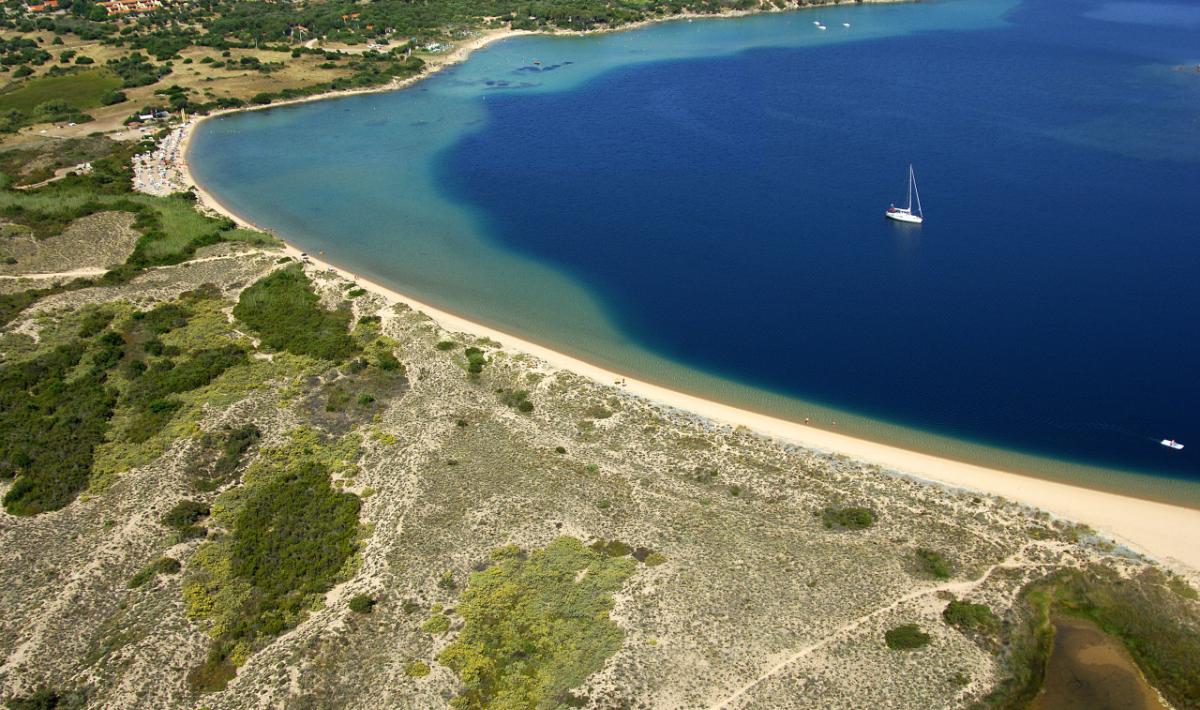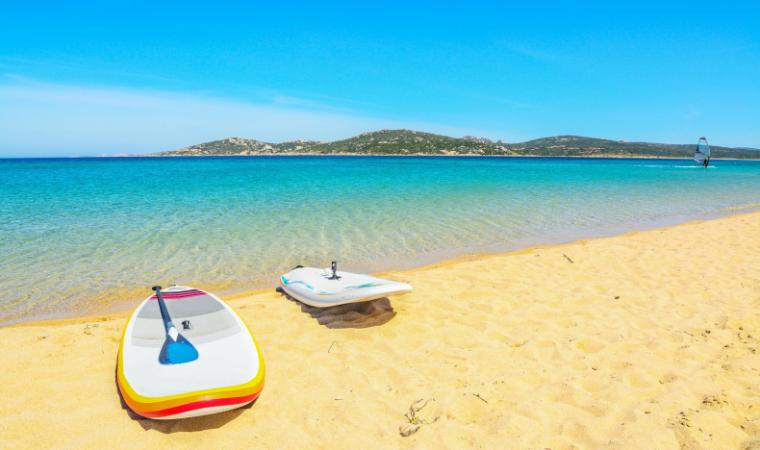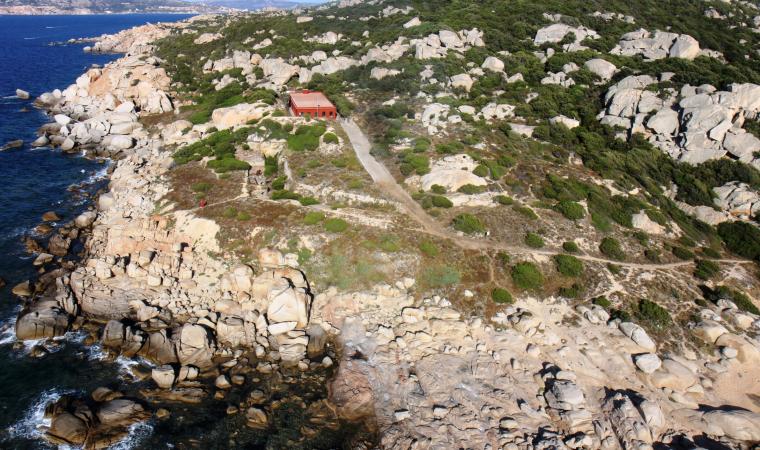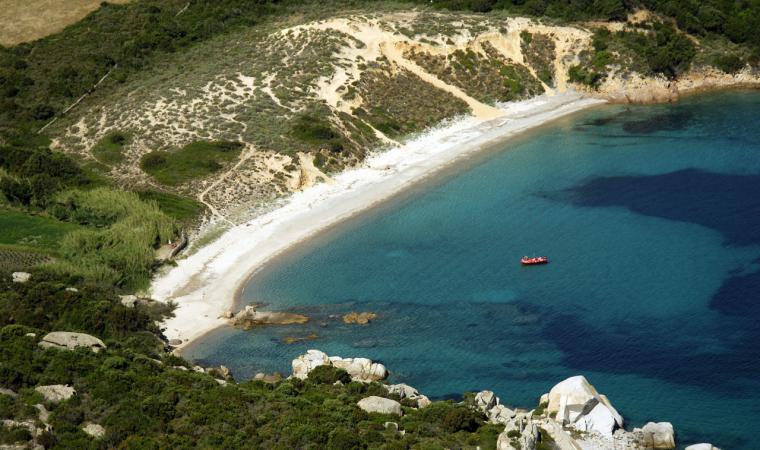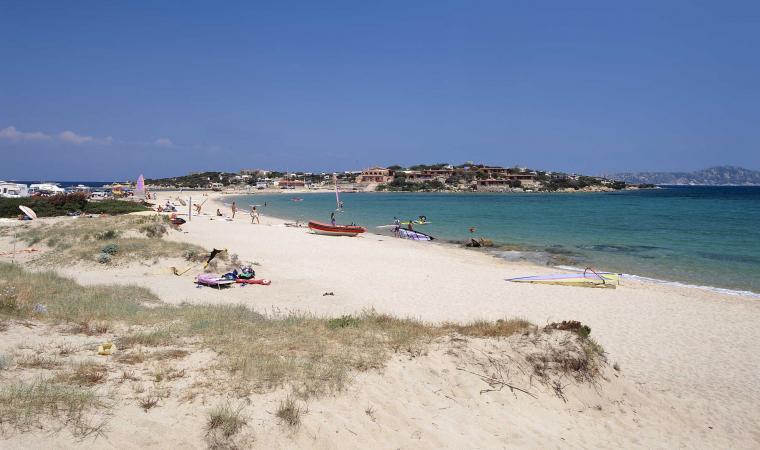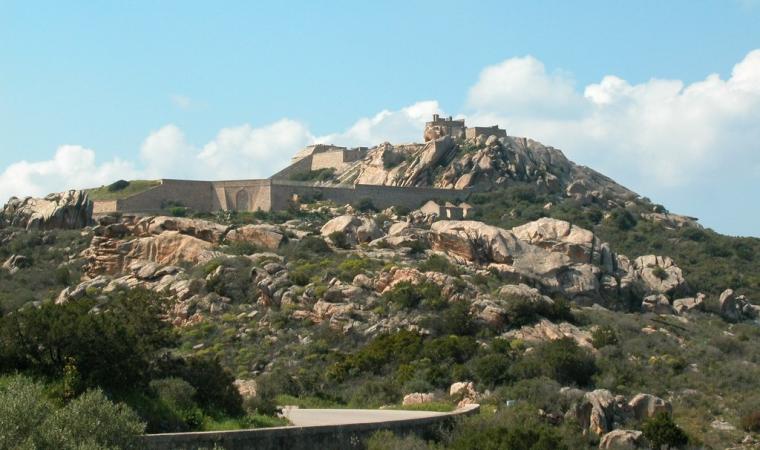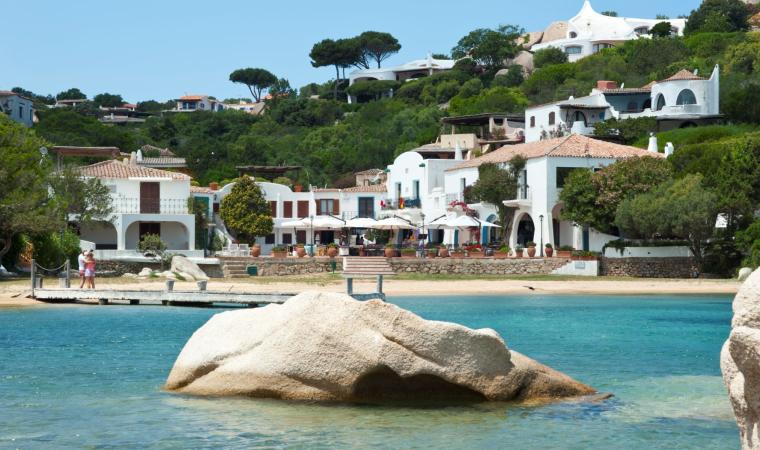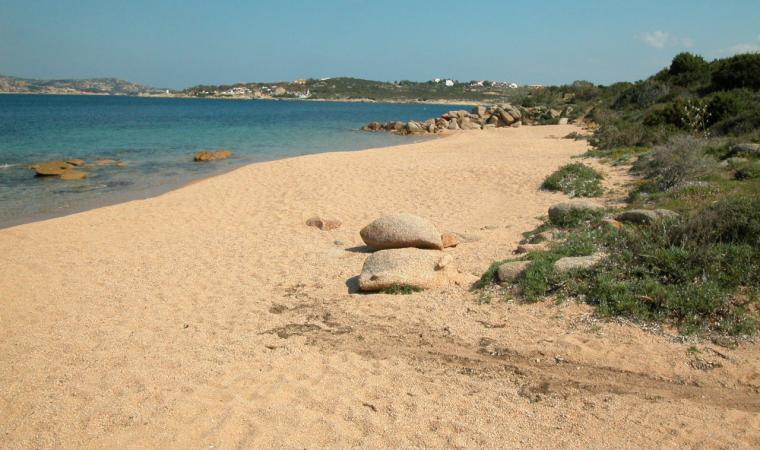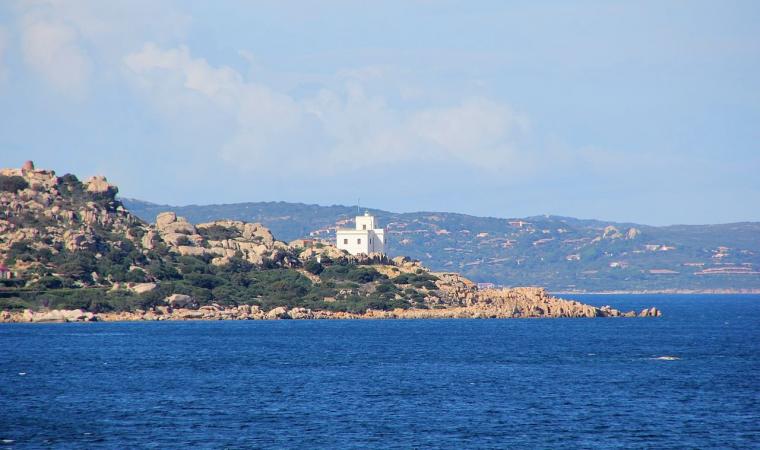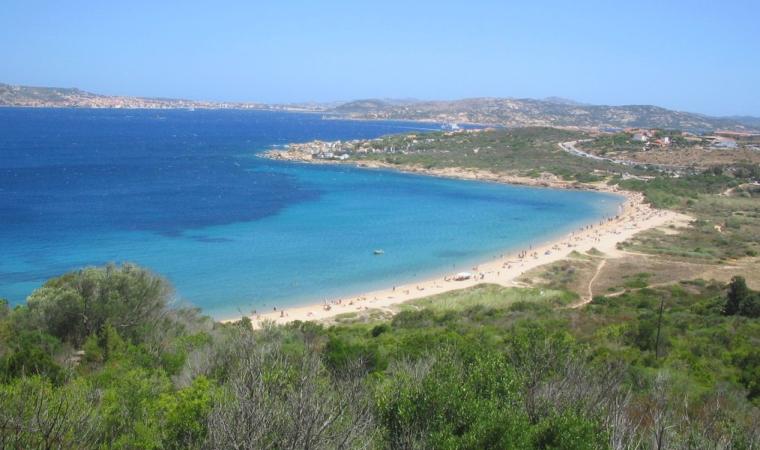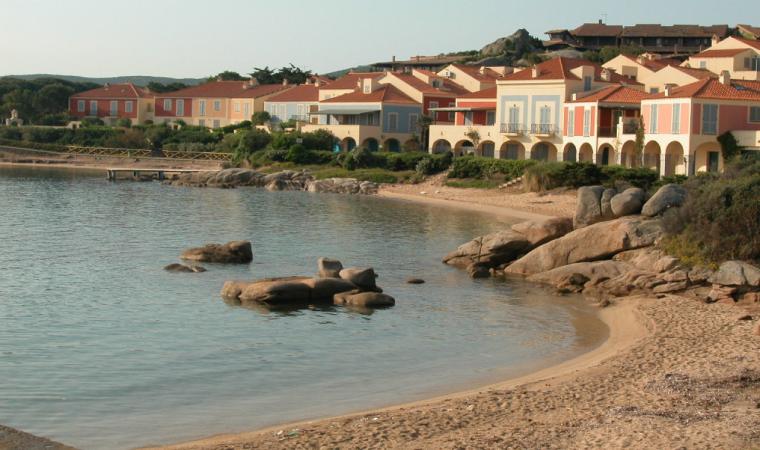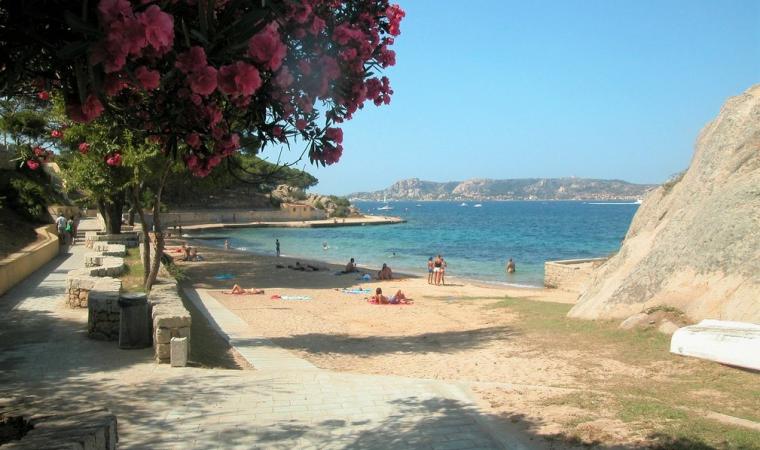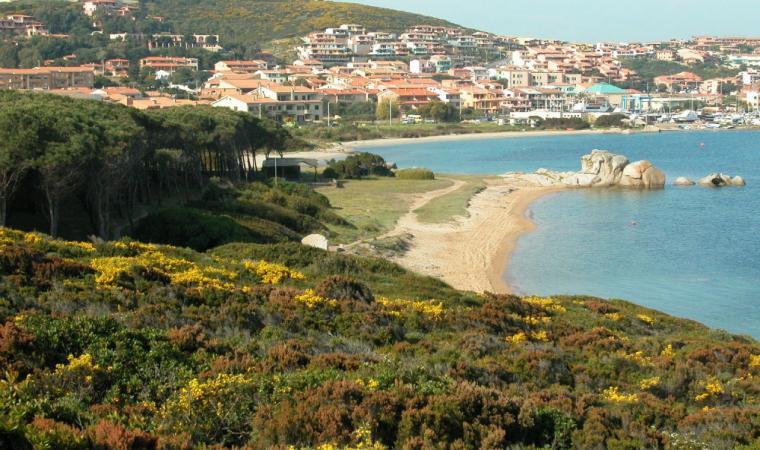The vegetation almost reaches the water, as if the myrtle and helichrysum bushes were tempted to dive into it, enchanted by the turquoise reflections of the sea. The greenery behind it surrounds a lagoon, while in front, it covers a small island. This is the captivating landscape characterising the beach of Costa Serena, one of the stretches of the Palau coast. The beach extends in a crescent shape of medium-fine grained golden sand. On the right, you will see a small port, while the view in front is embellished by a rocky islet entirely immersed in Mediterranean scrub. The beach is never overly crowded. It is suitable for children, thanks to the shallow waters, and is sheltered from the winds blowing in from the north. It is also frequented by water sports enthusiasts, especially lovers of windsurfing and kayaking. In addition to relaxing on the beach, swimming and enjoying sports on the sand and in the sea, you can stroll peacefully along the banks of the salt water lagoon behind it.
Beyond a small stretch of coast dotted with rocks, the coastline of Padula Piatta extends to the south-west and is also known as Cala Petralana, from the name of the river that flows to the beach, dividing it into two parts. The sand is soft and cream-coloured, with a sea of shimmering colours due to the reflection of the sunlight on the surrounding vegetation. You might want to linger on the beach at least until sunset and admire the wonderful colours as the sun sets on the horizon, the islet of Costa Serena and, further away, s’Isuledda or Isola dei Gabbiani (Island of the Seagulls). It is really a peninsula, connected to the mainland by a 50-metre-long sandy isthmus that opens out like a fan on two beaches, a paradise for sailing and surfing: Porto Pollo to the east and Arenaria to the west.
A few hundred metres as the crow flies separate the beach of Costa Serena from the Fortress of Monte Altura, evidence of the anti-French defence system that characterises the Gallura coast and the islands of the Maddalena Archipelago. It was built towards the end of the 19th century in local granite and, along with the batteries of Capo d’Orso and Baragge, it helped protect the northern coast. It was a ‘fortified citadel’, surrounded by walls, and the buildings within it were used as lodgings, dormitories, warehouses, workshops and even gardens and vegetable gardens. From the fortress, you can admire a breathtaking view of the Maddalena Archipelago. Also set in the stone and with a view of the open sea, you’ll find the Talmone military battery, which is at least a century older and can be reached via a path that starts just north of Costa Serena. You can imagine the soldiers wandering between the barracks and the turret, and in the lookout posts, always alert, staring out at the blue.

